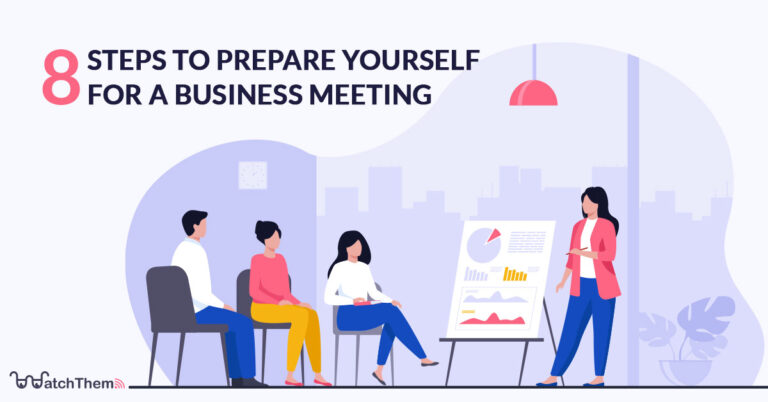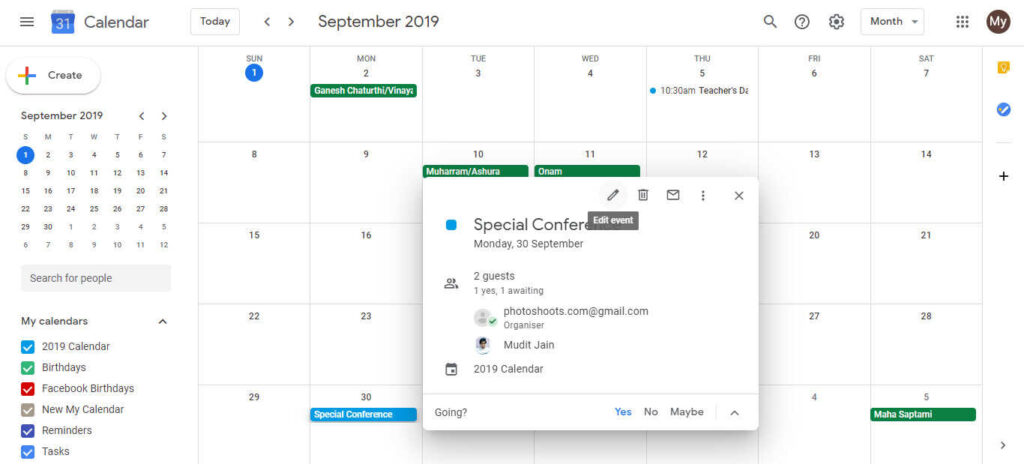Page Contents
A meeting begins before the actual meeting.
The statement basically means–the preparation for the meeting begins long before the actual meeting. From deciding the venue, dates, and timings to coming up with the meeting agenda and who to invite, a lot goes behind conducting a meeting. Well, the preparation also largely depends on who it is you’re meeting with.
For example, you are to have a face-to-face meeting with a prospective client wherein you have to pitch your services. One way to do so is to make a slideshow of your services and simply present it. However, you need to come up with a unique way to go about it. After the presentation, you can hand over your business card, which will leave an impact on the client’s mind.
A business card is an affordable and unique way to network and leave a lasting impact. You can design a business card that reflects your brand voice and get it printed. There are many customizable business cards printing services available today.
It is important not to miss out on these fundamentals before conducting a meeting. Be it a small internal meeting or a meeting you’ve been looking forward to with a prospective client; you want to leave no stones unturned in preparing for it.
While the article is not solely focused on conducting meetings efficiently to pitch your clients, the tips mentioned will surely help you in any type of meeting.
Let’s take a look at eight things that you need to take care of step-by-step.
8 Steps to Prepare for a Business Meeting
The steps mentioned are generic, so they do not depend on whether the meeting is held face-to-face or online.
1. Identify if a Meeting Is Required
If there is no meeting agenda, you simply won’t attend the meeting!
Well, the statement basically means–even if people participate in your meeting that has no agenda, it will be no different from people not attending it since nobody would know where the meeting is headed.
The first and foremost question you should have is whether a meeting is really required. Before you consider conducting a business meeting, check the questions mentioned below. Depending on the answer to each question, it will be clear if there is actually a necessity to conduct a meeting.
- Does the meeting intend to convey a specific message?
- Could you convey the message through any other communication channel?
- Do you need to meet face to face, or an online meeting would work better?
- Does the meeting demand a discussion or other attendees’ opinions?
These questions will prompt you to really think about the ‘why’ of the meeting. The success of a meeting depends primarily on how solid your reasons are. So, brainstorm on identifying the reasons for conducting a meeting before conducting one!
2. Invite the Right Participants
Who to invite to the meeting is also an important parameter for a successful meeting. Based on the meeting agenda, you need to decide how many and who to invite. Here are some questions to consider before inviting people to your meeting:
- Are they related to the meeting’s subject in any way?
- Is their opinion necessary for this particular meeting?
- How will their take on the subject impact the outcome?
- Is it more of a one-one type of meeting or a group meeting?
Once you have a clear meeting agenda, you need to determine which people suit that agenda. However, there still might be some confusion on whether to invite a particular person or not. In such cases, you can use the optional attendee feature while sending out meeting invites. Many calendars have this feature to make it easy for you.
3. Communicate Meeting Agenda to all Attendees
After you’ve set the meeting agenda, you need to convey the same to all the attendees. Why? Well, the goal of the meeting is to make sure everyone is on the same page, right? You should convey the main agenda, discussion points and even share some pre-required materials. This will ensure that every attendee comes prepared and enter the meeting with a common frame of mind.
4. Send Meeting Invites
After you’ve made sure of the meeting agenda and have conveyed it to all the attendees, it is time to send meeting invites.
You can send an invite through calendars like Google calendar, or you can create customizable email templates for each type of meeting. The format of the meeting invite might vary depending on whether the meeting is one-one, a team meeting, or a presentation. A good meeting invite covers the following things:
- Name of all attendees
- Date, time, and venue of the meeting (if it is to be conducted face-to-face)
- Agenda of the meeting
- Materials to go through prior to the meeting (if required)
A well-crafted invitation to a meeting, consisting of all the points mentioned above, will ensure everyone is on the same page.
5. Assign Roles to Increase Engagement
A meeting has to be interesting enough to keep people engaged. One way to achieve this is to intentionally keep some nodes open for interaction. The other way is to assign roles to each member, given it’s a team meeting.
Here are the following roles:
- Facilitator: A facilitator guides the meeting and ensures all sides of the issue are addressed.
- Timekeeper: A timekeeper makes sure the meeting is run efficiently and on time.
- Scribe: The job of a scribe is to take away key points from the meeting and distribute notes by the end.
- Expert: An expert speaks only when the room requires them to. Otherwise, they can just be a part of the meeting and remain focused.
6. Choose a Decision-Making Method Beforehand
Choose a decision-making method ahead of time to ensure that you end your meeting with a clear outcome.
Below are three types of decision-making methods:
Majority vote: You can use this method in a group discussion that requires coming up with solid results. Plus, every attendee gets to share their opinion.
Leader’s call: This is the fastest way to reach a conclusion. So if you have a time-bond meeting, you can go with this approach. The only drawback of this method is that some opinions remain unheard.
Group consensus: This method ensures that everyone’s opinion is taken into account.
7. Use proposal templates to pitch
You can use a pitch proposal template to leave a lasting impact on your prospective client. This is usable if you want to pitch your product or service to a potential client or are looking to collaborate with them. You can go through the Pitch’s proposal template collection and choose the one that goes with your brand voice.
8. Don’t Forget to Take Feedback
Concluding a meeting is as important as starting it. At the end of the meeting, ask yourself the following questions to know if the meeting was successful:
- Did the meeting meet the agenda?
- Was it interactive?
- Did all attendees gain clarity by the end?
- How could it be improved?
Asking such questions will measure the success of your meeting and help you improve at conducting meetings in the future.
Conclusion
You (as a meeting host) should always remember the fact that all attendees are spending their valuable time on your meeting. It becomes your responsibility to make the most out of it. This is possible only if you know where and how to guide the meeting. These steps will help you plan your meeting accurately. However, what really needs to be addressed in the meeting depends on your business requirements.
Lastly, remember–a successful meeting is the one where both parties walk out of the meeting with either a conclusion or concrete points to discuss in the next meeting. If you fail to achieve either of the two, it means the meeting was just not fruitful.



